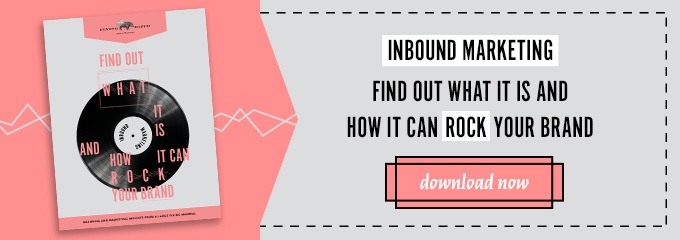 Marketing
Marketing
Is Inbound Marketing Right for Your Brand? 6 Surefire Ways to Know
Though you won’t find his name in any history books, Ron Popeil is undoubtedly the best inventor and salesman of the 20th century.
Sure, there were some other important inventions in the past 100 years or so: nuclear power, the personal computer, the Internet and radio. But — be honest — everything really pales in comparison to some of Ron Popeil’s two-dozen-plus inventions. Where would the world be without the Showtime Rotisserie Grill, The Pocket Fisherman, Mr. Microphone or Hair-in-a-Can? The dark ages, that’s where.
While Ron was a great inventor, he was also a superb TV pitchman. By coining the now-ubiquitous terms “But wait, there’s more!” and “Set it and forget it,” he cemented a place for himself in the prestigious Infomercial Hall of Fame.
While “set it and forget it” might be a good trait for a rotisserie grill, you can’t apply the same mantra to an inbound marketing campaign. If you’re not willing to invest some major elbow grease into inbound marketing, it’s simply not going to work for you.
We’ll be the first to admit that inbound’s not the best fit for every company. How do you know if inbound marketing is right for your brand? Follow these six steps to find out:
You’ve Got Total Buy-In
Inbound marketing requires complete confidence from everyone in your organization. There’s really no way around it. From the CEO to the team on the front lines of your business, each employee should be well-versed in what inbound methodology is and professes.
Each decision maker has to be invested in inbound marketing before signing up with an agency. And the fewer decision-makers there are, the faster the process goes.
…But You’re Willing to be Patient
The difference between Welch’s grape juice and a $8,000 bottle of Cabernet isn’t that much, in reality. They’re both made primarily of grapes, and all grapes are pretty similar. The major difference is time, environment and patience.
Inbound involves a lot of content creation, which isn’t a very fast process. After the content is designed and deployed, it needs constant monitoring and analytics. And the content will need tweaking along the way. It’s not an overnight process.
Accordingly, your brand needs complete patience. Results will come, but they won’t come overnight.
Potential Customers Don’t Quite Understand What You Do
From the cars that we drive to the electronics that power our homes, our modern world is comprised of bits and pieces of things that work, seemingly miraculously, even though we don’t consider them much. Someone out there makes lightbulb sockets for helicopters. Someone out there makes the little springy bits that go in ballpoint pens. Someone discovered the best formula for the brass that’s used to braze large industrial HVAC systems together. And on and on.
If you’re in the business of something that you find difficult to concisely define to your customers (especially in a B2C environment), inbound is a great resource for you.
Instead of constantly clarifying and restating what your company does, create content that answers what your customers frequently want to know. If you invented a complicated $7,000 electronic stethoscope that flips the medical industry on its head, write some content about it. Customers will flock to the company who can answer their questions about your product. They’re buying your expertise as much as they’re buying your product.
You Have New Product Offerings
After years of refining and testing and honing your new product, it’s ready to launch. So it’s up on your website, ready for customers to click “buy,” and no one does. So what gives?
If you’re offering a new product or service that is different than what you currently offer, it’s a great time to try inbound. You can’t just drop a new product onto your site and expect your customers to know everything about it. Create content about your new offering that helps your customers understand.
You Have a Long-Term Growth Goal
Do you have a long-term vision and plan for your business? Good. Inbound marketing fits in snugly with your long-term growth goals, and its breadth can expand to grow with your company.
By creating awesome content and paying careful attention to how your customers interact with it, you get real-time, accurate feedback on your company. This makes it super easy to keep your goals in line. When you hone specific, SMART goals, you know exactly where you want to be, and content is the perfect stepping stone to get there.
You Trust Your Inbound Agency
Many people purchased the George Forman Grill because they knew it was a quality product. And many others purchased it without even seeing it in person or knowing much about it — they just trusted a heavyweight boxing champion to steer them in the right direction about making panini sandwiches.
On the same note, trust in your inbound agency is imperative to the process. If you know that inbound is right for you but don’t quite know how to approach it, reach out to an agency. Shop around and find one that you trust.
Think of your inbound agency as a partner or teammate to help you achieve your goals, not just a vendor doling out work for you. It’s a back-and-forth process, and it’s nothing to take lightly. Find an agency that communicates with you well, that you get along with and that you trust. Inbound marketing isn’t something that Ron Popeil can offer on a late-night infomercial as a panacea for all your marketing problems. Nor should it be. It’s a carefully-crafted, custom approach to marketing that takes time, patience and vision.
You can’t just “set it and forget it,” but you can find the right team to help in the kitchen. The success of your campaign depends on it.
Photo courtesy wikimedia commons


